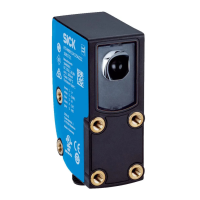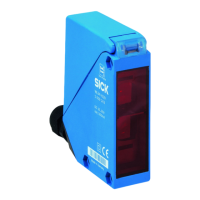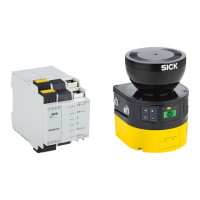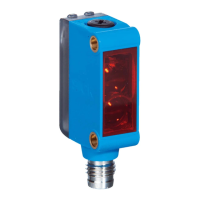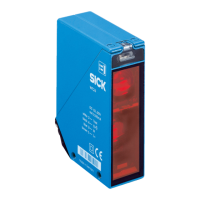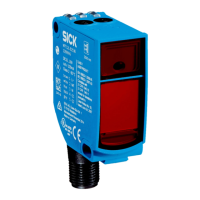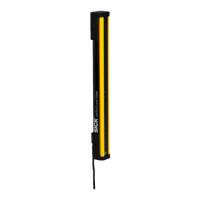Operating Instructions
NAV350
Product description
8013889/ZML0/2017-06-09
© SICK AG · Germany · All rights reserved · Subject to change without notice 41
Chapter 3
Recommendation • As not all reflectors are detected during the journey or can be obscured for a time, more
than 3 reflectors are always to be used per layer. Five reflectors are recommended. The
vehicle’s route is to be checked to ensure that at least 3 reflectors can be detected at
the same time.
• As far as possible the same number of reflectors is to be fitted to both sides of the route.
If the reflectors are only on one side as seen from the NAV350, the positioning accuracy
may be reduced by unfavourable geometrical conditions.
• At positions at which very high accuracy is required and on bends, as far
as possible
there m
ust be 4 or more reflectors within the action radius of NAV350. Also
the angle
betw
een 2 reflectors must not be more than 120°.
• At positions at which the NAV350 is placed on the route, there must be at least 4 to 6
reflectors in the measurement area of the NAV350. Also the angle between 2 reflec
tors
must not be more
than 120°.
In practice the recommendations stated cannot always be implemented. For this reason the
reflector positions must be planned as well as possible in relation to these recommenda-
tions.
3.10.7 Measurement and entry of the reflector coordinates
After planning and installation of the reflectors, the reflector coordinates must be measured
precisely. The NAV350 requires these coordinates for the determination of the position in
real-time. The coordinates of the reflectors used are saved in the non-volatile reflector mem-
ory in the NAV350 for reference.
There are two methods of measuring and entering the coordinates:
• A surveyor manually measures the positions of all reflectors referred to a common co-
ordinate system. All these coordinates are added to a structured ASCII file on the
PC
and transferr
ed with the aid of the SOPAS ET configuration software to the NAV350 (see
section 6.6 “Loading reflector data” on page 57). This transmission can also be made
from the vehicle computer using the software telegram A
DD LANDMARKS
(
SMN MNLAYADDLANDMARK).
• Using the M
APPING function and then ADD LANDMARKS (SMN MNLAYADDLANDMARK) the
NAV350 can also automatically
teach-in the reflector positions. For this purpose the
NAV350 requires exactly measured initial positioning so that then it can measure
the
c
oordinates of all reflectors on the route in succession.
Recommendation The determination of the reflector positions by a surveyor is more precise and will ensure
higher system accuracy.
The M
APPING function of the NAV350 is suitable
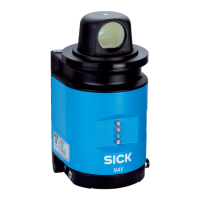
